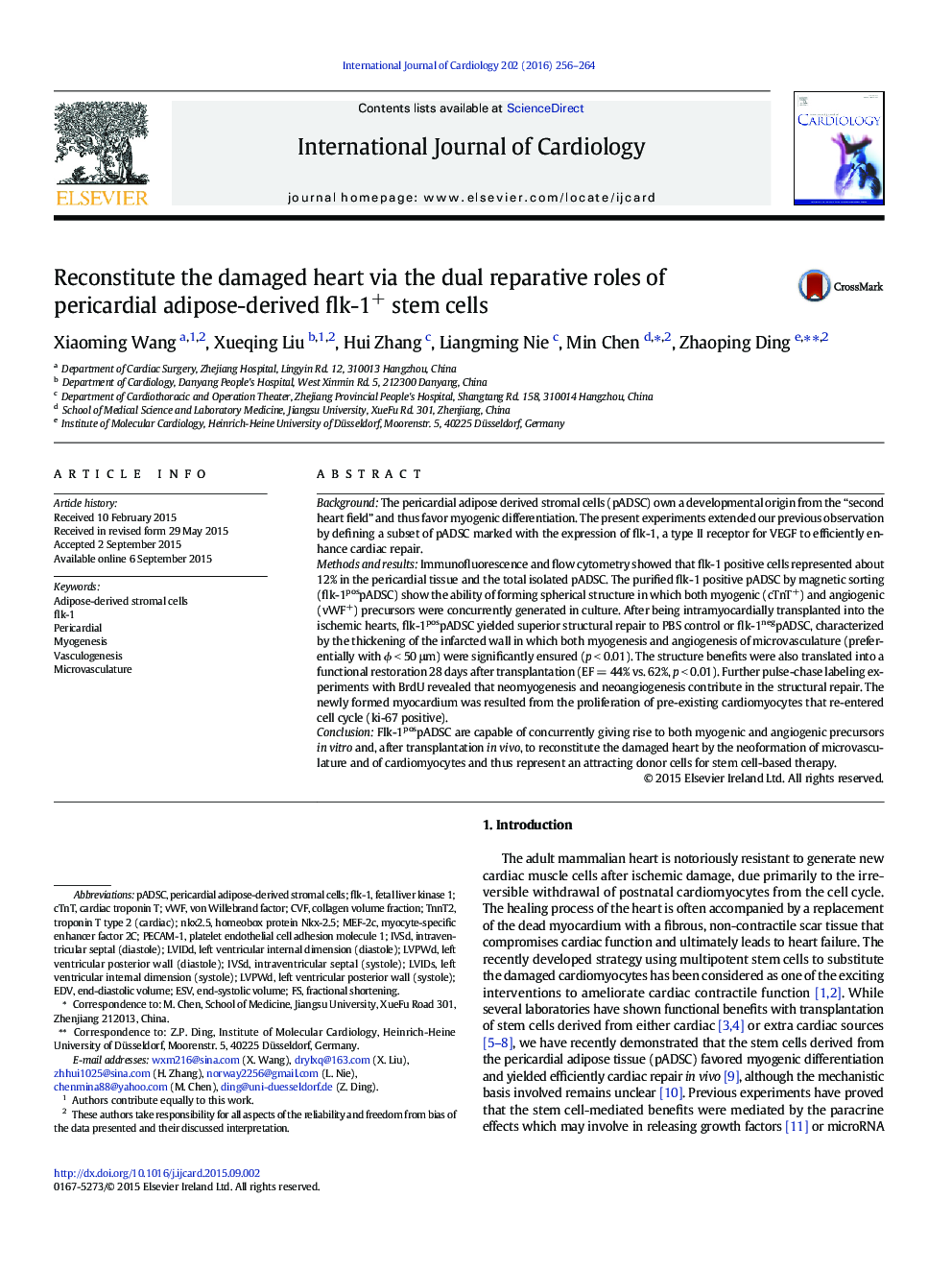| کد مقاله | کد نشریه | سال انتشار | مقاله انگلیسی | نسخه تمام متن |
|---|---|---|---|---|
| 5965362 | 1576149 | 2016 | 9 صفحه PDF | دانلود رایگان |

- Flk-1 positive cells gave rise to both myogenic and angiogenic precursors.
- In vivo transplantation yielded structural and functional repair for injured heart.
- Neoangiogenesis befell preferentially on microvasculature
- Neomyogenesis via the proliferation of pre-existing cardiomyocytes.
- Flk-1 positive cells are attacking donor cells to reconstitute the damaged heart.
BackgroundThe pericardial adipose derived stromal cells (pADSC) own a developmental origin from the “second heart field” and thus favor myogenic differentiation. The present experiments extended our previous observation by defining a subset of pADSC marked with the expression of flk-1, a type II receptor for VEGF to efficiently enhance cardiac repair.Methods and resultsImmunofluorescence and flow cytometry showed that flk-1 positive cells represented about 12% in the pericardial tissue and the total isolated pADSC. The purified flk-1 positive pADSC by magnetic sorting (flk-1pospADSC) show the ability of forming spherical structure in which both myogenic (cTnT+) and angiogenic (vWF+) precursors were concurrently generated in culture. After being intramyocardially transplanted into the ischemic hearts, flk-1pospADSC yielded superior structural repair to PBS control or flk-1negpADSC, characterized by the thickening of the infarcted wall in which both myogenesis and angiogenesis of microvasculature (preferentially with Ï < 50 μm) were significantly ensured (p < 0.01). The structure benefits were also translated into a functional restoration 28 days after transplantation (EF = 44% vs. 62%, p < 0.01). Further pulse-chase labeling experiments with BrdU revealed that neomyogenesis and neoangiogenesis contribute in the structural repair. The newly formed myocardium was resulted from the proliferation of pre-existing cardiomyocytes that re-entered cell cycle (ki-67 positive).ConclusionFlk-1pospADSC are capable of concurrently giving rise to both myogenic and angiogenic precursors in vitro and, after transplantation in vivo, to reconstitute the damaged heart by the neoformation of microvasculature and of cardiomyocytes and thus represent an attracting donor cells for stem cell-based therapy.
Journal: International Journal of Cardiology - Volume 202, 1 January 2016, Pages 256-264